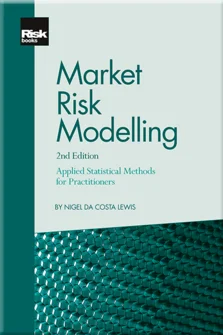Regression in a Nutshell
Regression in a Nutshell
Preface
Risk Modelling and its Myths
Mastering the R Statistical Package
Key Concepts on Probability
Tools for Describing Risk Factors and Portfolios
The Essentials of Hypothesis Testing for Risk Managers
Alternative Methods to Measure Correlation
A Primer On Maximum Likelihood Estimation
Regression in a Nutshell
Fitting Probability Distributions to Data
Practical Principal Components Analysis
Three Essential Models for Volatility
Random Numbers and Applied Simulation
Tail Risk Modelling
Conclusion to 'Market Risk Modelling (2nd edition)'
Suppose, as the only analyst on duty, you are called into the executive suite by your chief investment officer (CIO). They would like to know whether a pay-fixed/received three-month Libor (London Interbank Offer Rate on Eurodollar deposits) interest rate swap can be used to hedge the trading groups’ variable interest expense associated with a prime-based loan. You have been asked to report back inside 30 minutes with an initial report. Critical to your analysis will be the nature of the relationship between Libor and the prime rate. You could look at the correlation between the two variables, although this may be of limited use because it will only indicate the strength of the linear association. Your real interest lies in using the prime rate to explain three-month Libor. This type of problem is a good candidate for regression analysis.
Regression analysis is a technique that provides quantitative information about the relationship between two or more variables. Consider a sample of N pairs of observations {(y1, x1), (y2, x2), …, (yN, xN)} on two continuous variables, X and Y. Regression analysis uses X to help explain Y. Since X is being used to explain Y, it is known as the
Copyright Infopro Digital Limited. All rights reserved.
As outlined in our terms and conditions, https://www.infopro-digital.com/terms-and-conditions/subscriptions/ (point 2.4), printing is limited to a single copy.
If you would like to purchase additional rights please email info@risk.net
Copyright Infopro Digital Limited. All rights reserved.
You may share this content using our article tools. As outlined in our terms and conditions, https://www.infopro-digital.com/terms-and-conditions/subscriptions/ (clause 2.4), an Authorised User may only make one copy of the materials for their own personal use. You must also comply with the restrictions in clause 2.5.
If you would like to purchase additional rights please email info@risk.net











